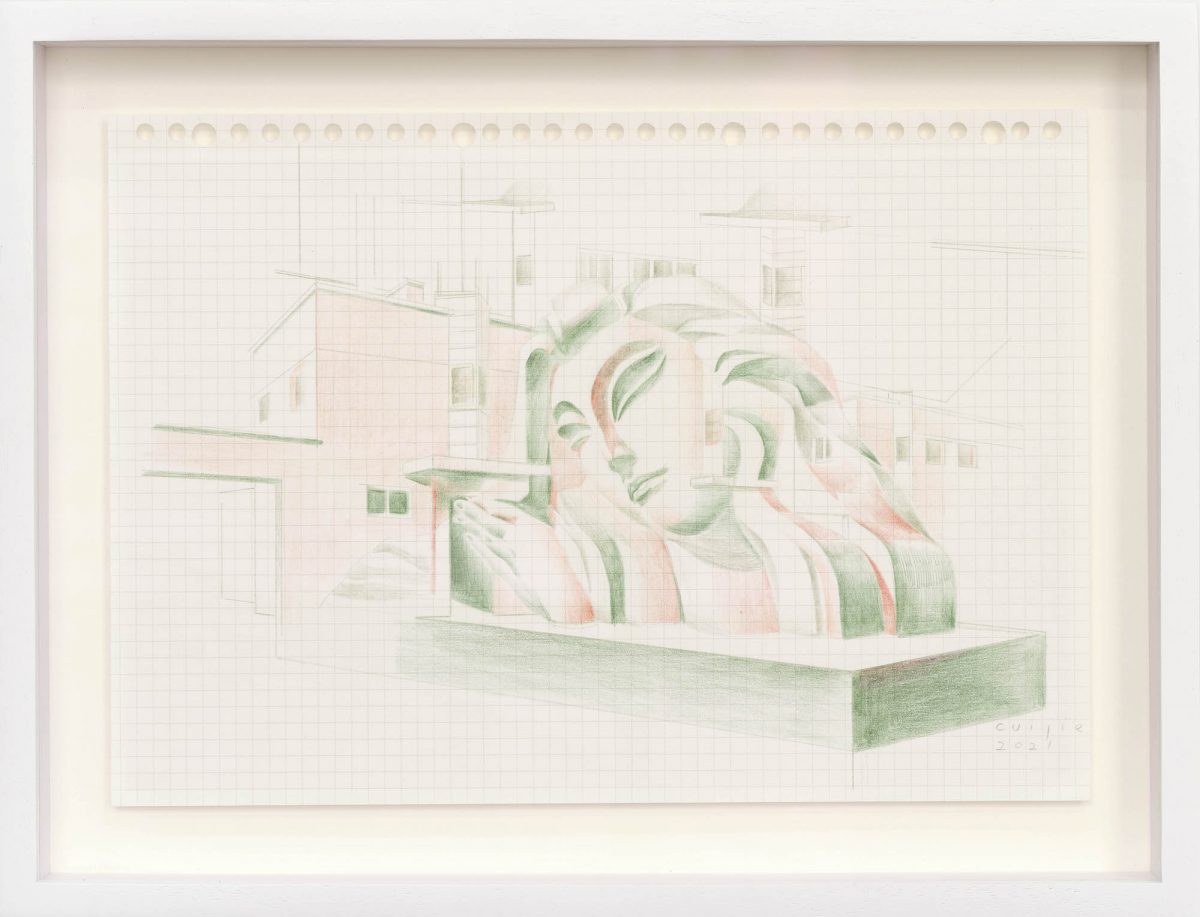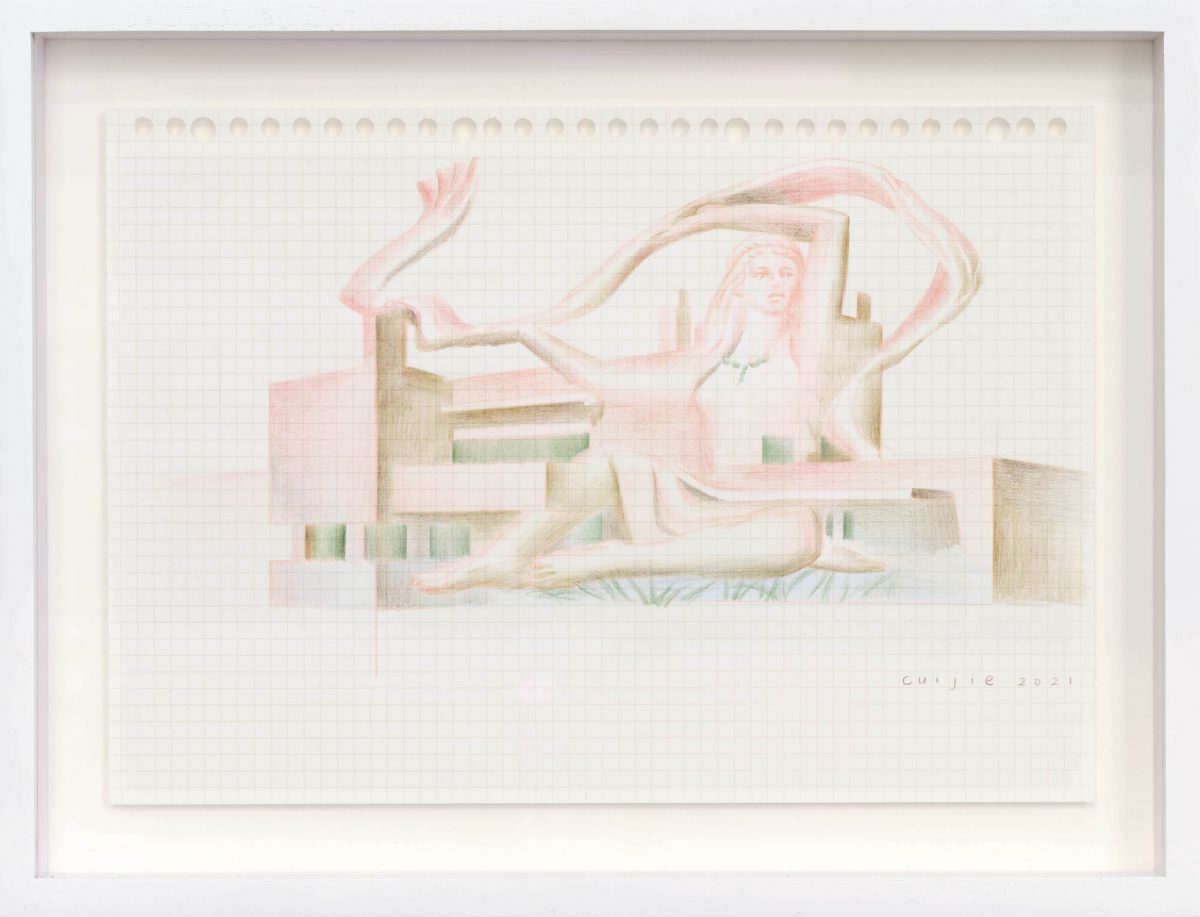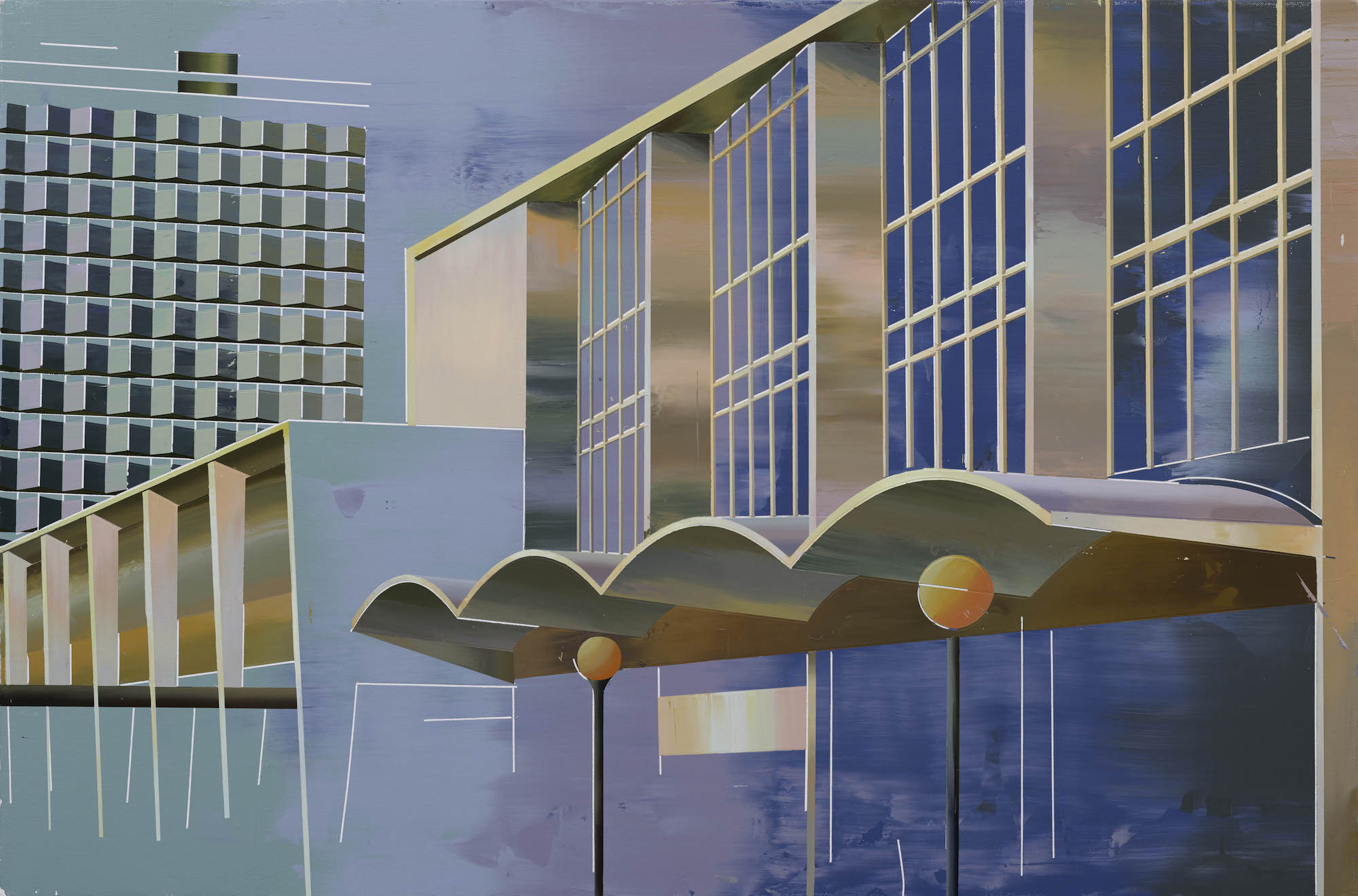
Shanghai-based artist Cui Jie creates beautiful paintings that blur the lines between architectural fact and fiction. Employing the language of sci-fi and glossy modern-day property development, her images grapple with the utopian ideals of building for the future. Through her eyes, the sterile mundanity of a Radisson Blue hotel, or the divisive status of the brutalist Western City Gate in Belgrade are given a fantastical edge.
For her most recent project New Model Village, now on show at Focal Point Gallery in Essex, she explores the legacy and vision of the modernist factory towns of Silver End in Braintree, and the Bata Estate in East Tilbury, which was built by the Czech shoe company to house its workers.

If you could save only one item from your studio, what would it be?
The hard drives. There are all kinds of things in them. Research files, proposals, exhibition archives, films, interviews, invoices and receipts, contracts. And all kinds of photos; images of artworks from when I was a undergrad to now, images of cities I have been to or lived in (streets, architectures, sculptures, green belts, people…), medical scans of my teeth…
What was the last art material you bought to use in your work?
An even thinner kind of tape. I use mostly masking tapes of different brands, from 3M, Handy Crown, and many unknown Chinese brands.
“I planned a trip to Tokyo to spend a couple of nights in the Nakagin Capsule Tower, but was stopped by the pandemic. They began demolishing it on 12 April 2022…”
What is your go-to song when you’re working in the studio?
I listen to a lot of different things, but recently I’ve mostly been listening to Flowing Water
, Chinese guqin music performed by Guan Pinghu (管平湖); and M01 Chant I – Making of Cyborg, by Kenji Kawai.
- Cui Jie, Silver End Village #2, 2021. Courtesy Antenna Space, the artist and Focal Point Gallery
- Cui Jie, Silver End Village, 2021. Courtesy Antenna Space, the artist and Focal Point Gallery
Which single work of art would you choose to live alongside in your home?
If it can also mean living in an artwork, then I want to live for a period of time in The Nakagin Capsule Tower by Kisho Kurokawa. The Nakagin Capsule Tower was representative of the Japanese Metabolism movement. It consisted of 140 individual capsules, revolving around the centre of it from various angles. It was first conceived as a collection of replaceable, mobile capsules that made it possible for the building (and by extension the city) to metabolise, grow and roam as an organism.
Few years ago, I planned a trip to Tokyo to spend a couple of nights in it (a small number of rooms were available for short rents), but was stopped by the pandemic. They began demolishing it on 12 April 2022.
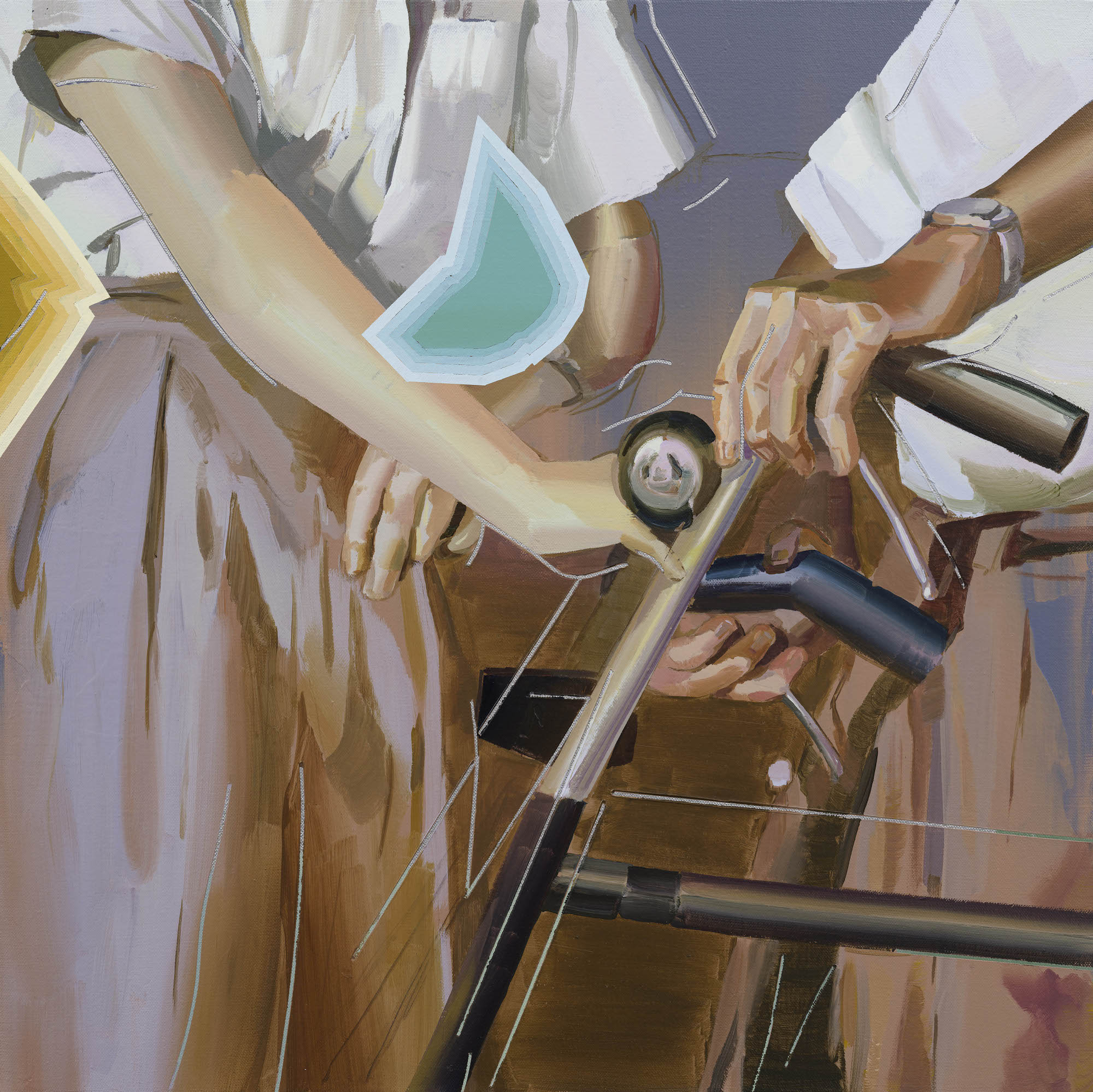
Top three art or photography books?
A Collection of Yuan Dynasty Paintings is made up of five chapters and sixteen volumes. The image and print quality is just marvellous. There is so much we can talk about when it comes to Yuan Dynasty art: the only thing bad I can say about the publication is that each of its volumes are just so so heavy and big. It can be tiring going through it.
I really appreciate Sigmar Polke’s art. I bought Alibis: Sigmar Polke 1963-2010 at the MoMA retrospective in New York in 2014. After that, Tate Modern also showed the same selection of works from a different curatorial perspective. I was fortunate enough to see them both, and it was very rewarding seeing the same group of works in spaces that are very different from one another.
In 2003 or 2004, when I was still in art school I read Vitamin P by Phaidon. Through it I got to learn a lot about many exciting young painters. I was very happy when my works were included in the Vitamin P3 in 2016.
“There all kinds of photos on my hard drives: images of artworks, images of cities I have been to or lived in, medical scans of my teeth…”
If money were no object, what would you most like to experiment with in your work?
Trying to invent a new environmental friendly material for painting and sculpture.
Tell us a pet peeve of yours when it comes to the art world
It can be annoying when people are too fussy about details.
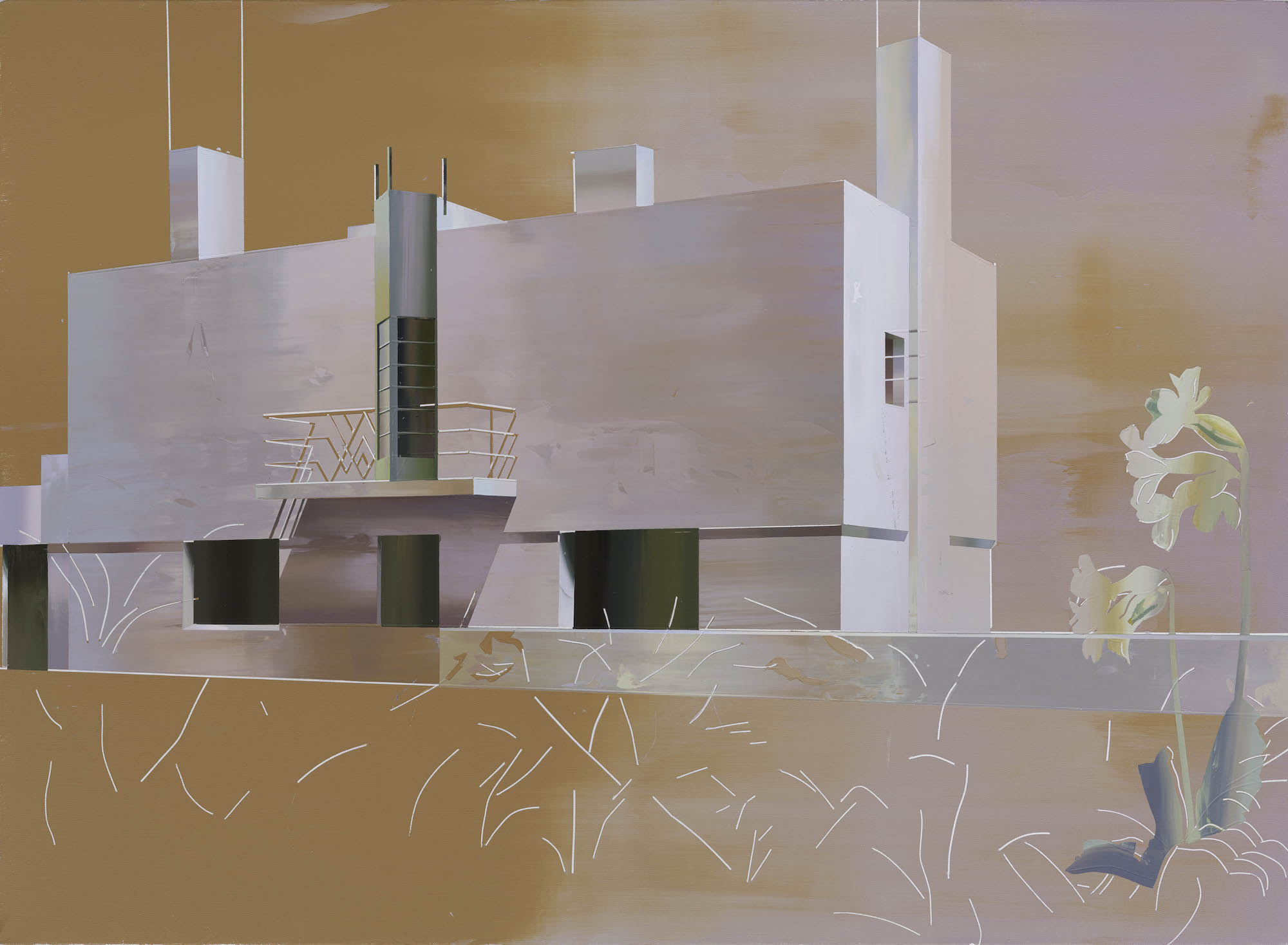
What is your favourite gallery or museum space around the world?
It varies really, as I am mostly interested in spaces that I work with at a certain time. I am at the moment showing my works at the Focal Point Gallery in Essex, and that’s a very beautiful space.
It was amazing working with the team there. They gave me immense support, helped me to fetch urban planning files and archival materials on the factories and communal lives of Essex in the old days. I was then able to approach that history of Essex, and to compare it to Caoyang New Village [Communist China’s first social housing project] as part of the exhibition.
Holly Black is Elephant’s managing editor
Listen to all the go-to songs picked by our 5 Minutes With artists here

